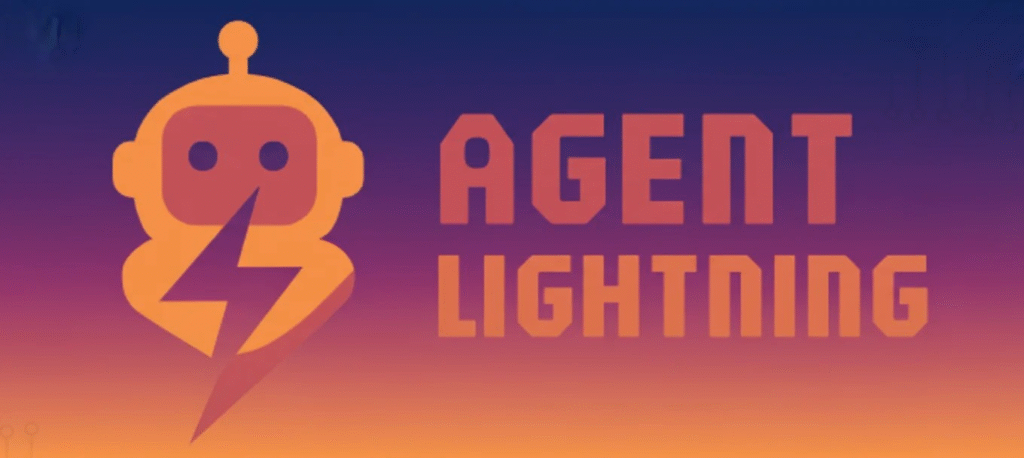In a significant move for the AI community, Microsoft has launched Agent Lightning, a groundbreaking open-source framework designed to supercharge multi-agent systems through advanced Reinforcement Learning (RL).
This innovative tool provides a streamlined methodology for enhancing the performance of policy Large Language Models (LLMs) by seamlessly converting real-world agent interactions into structured RL transitions.
Remarkably, it achieves this without necessitating any alterations to the pre-existing agent architecture, offering a plug-and-play solution to a long-standing challenge.
How Agent Lightning Transforms Agent Training

Agent Lightning fundamentally reimagines the paradigm for optimizing AI agents. It reframes an agent’s operational behavior as a formal decision-making process, specifically modeling it as a Partially Observable Markov Decision Process (POMDP). This rigorous formalization is the cornerstone of its effectiveness.
- A Formalized Learning Process: Within this model, the agent’s current context or input is treated as an observation. The subsequent call to its underlying model (such as an LLM) is defined as an action. Most critically, the performance feedback—whether a final result or an intermediate evaluation—is quantified as a reward. This structured approach transforms chaotic agent activity into clean, machine-readable data for RL.
- Generation of High-Quality Training Data: A common bottleneck in RL is noisy, inconsistent data. Agent Lightning systematically extracts the agent model’s call records, meticulously capturing the input, output, and corresponding reward signals. This process acts as a sophisticated filter, stripping away irrelevant noise and generating pristine, high-quality transition data that is essential for stable and efficient reinforcement learning.
- Seamless Integration with Minimal Friction: Perhaps one of its most compelling features is the “plug-and-play” capability. Agent Lightning abstracts away the underlying intricacies of RL, allowing developers to integrate it with agents built on popular frameworks like LangChain, AutoGen, or the OpenAI Agent SDK. This integration can be achieved with virtually zero code changes to the original agent logic, dramatically lowering the barrier to entry.
This end-to-end modeling and data extraction pipeline ensures that even the most complex, multi-turn conversational interactions can be systematically analyzed and optimized using proven RL techniques.
Scalable Architecture Behind Agent Lightning
A core architectural innovation within Agent Lightning is its “Training-Agent Disaggregation” methodology. This design principle clearly and deliberately separates the agent’s live execution environment from its dedicated RL training environment. This decoupling is not merely a technical detail; it is essential for achieving enterprise-grade scalability, operational stability, and simplified deployment.
- The Lightning Server: The Centralized Brain: This component is the powerhouse for all training and model serving activities. It handles the computationally intensive RL training processes, which are typically run on high-performance GPU clusters. A key feature for developer adoption is that the Server provides a fully OpenAI-compatible API interface. This means that any client application or agent trained to call OpenAI’s models can seamlessly call the updated, optimized models served by Agent Lightning, making model updates and deployment both efficient and standardized.
- The Lightning Client: The Lean Observer: This lightweight component operates within the existing agent’s runtime environment. Its role is to discreetly capture call records—monitoring the agent’s actions, inputs, and outputs—and transmit this performance data back to the central Server in real-time. This elegant design ensures that the agent’s critical real-world dependencies, such as custom tools, web browsers, and other external services, remain tightly integrated and unaffected. The heavy computational burden of GPU-based training is entirely offloaded to the Server layer.
This robust client-server architecture empowers organizations to maintain stable, high-performance agents in production environments while simultaneously conducting continuous, background training cycles to serve progressively more intelligent and optimized models.
Final Words on Agent Lightning
Across all these diverse and cognitively challenging tasks, the training process facilitated by Agent Lightning consistently demonstrated a stable and sustained upward trend in the reward signal.
This directly correlated with measurable improvements in the accuracy and overall capability of the policy LLMs. The framework’s proven success in optimizing agents for these practical applications solidifies its potential to become a foundational technology for building the next generation of intelligent and efficient AI systems.
Read More: Microsoft Launches MAI-Image-1



